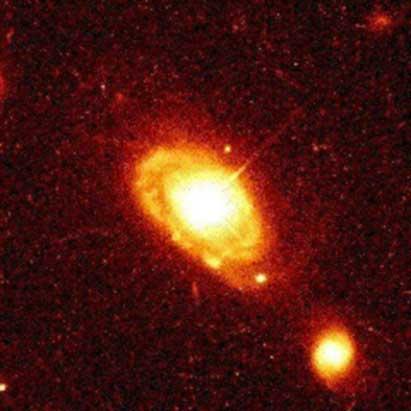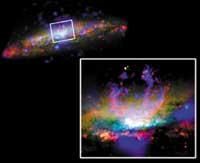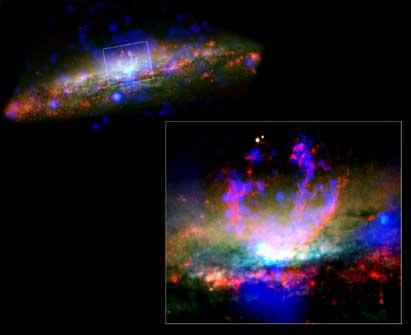Intergalaxy gas filaments
2002/11/26 Roa Zubia, Guillermo - Elhuyar Zientzia
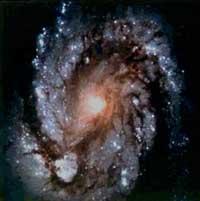
The light coming from space to Earth comes from the stars of galaxies. With this light, astronomers can calculate the amount of matter in the universe. But this is not the only way to calculate the mass of the universe, but also by analyzing the movement of galaxies you can know the amount of matter there. And the results of both calculations are not the same.
The result of the first calculation is much lower than that of the second, since scientists believe that in the universe there is much more matter than is seen. What is not seen is called dark matter.
In 1998, astronomers Renyue Cen and Jeremiah Ostriker of Princeton University proposed a hypothesis that explained it: in intergalactic space there are invisible gas filaments. However, the detection of this matter is very difficult because these gas clouds have a temperature much lower than that of the galaxy and the galaxy cluster, with only two million degrees.
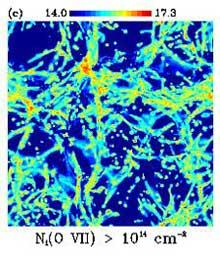
Last summer NASA astronomers detected the footprint of these filaments when they were studying a quasar with the Chandra telescope. Now, the team led by astronomer Jelle Kaastra of the SRON Utrecht institute has observed these filaments with the XXM-Newton telescope.
To do this, they have studied five clusters of galaxies supposedly with a large number of filaments and have confirmed the existence of this matter. They are clouds of ionized oxygen atoms that emit X-rays.
The results have been published in the journal Astronomy Astrophysics. However, other astronomers believe that the filaments have not really been seen and that we will have to wait for the results of NASA's SPBOT mission to be in hand. Spectroscopy and photometry will be in charge of experimenting with SPEDE missions. However, it will be extended as it is scheduled to launch in 2005.

Gai honi buruzko eduki gehiago
Elhuyarrek garatutako teknologia



